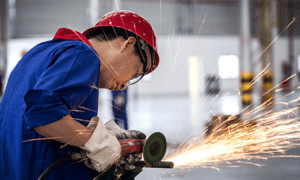If you’re an actor, musician, or public speaker, you know the importance of gestures and movements. It’s not an overstatement to say that they can make or break your performance. With this in mind, we’re going to discuss some tips to help perfect your gestures and movements on stage!
Practice, Practice, Practice
We cannot emphasize enough the importance of practice when it comes to perfecting your gestures and movements. Start with basic exercises like walking around the stage, getting familiar with the space, as well as stretching and loosening your body; this will help you settle into the performance environment. Also, practice any dance moves and gestures that you plan to use in the performance. It’s important to be comfortable with them so they don’t look awkward or forced.
Be Mindful of Your Posture
Your posture on stage will communicate a message to the audience, whether you intend to or not. Make sure that you are aware of your body language, facial expressions, and movements; these will all affect how you come across to the audience. Above all else, make sure to stand tall and maintain good posture throughout your performance because this will
Be Clear with Your Gestures
Always make sure that your gestures are clear and intentional when performing on stage. Movements should be coordinated with the music, lyrics, or actions being performed. Be aware of how much space you’re taking up on stage and if a prop or other object needs to be moved, do so with purpose.
Use Your Facial Expressions
Facial expressions can play an important role in conveying your message to the audience. Subtle changes in facial expression can signal an emotion or mood that’s crucial for the audience to understand. So, use subtle and natural facial expressions to enhance your performance.
Vary Your Movements
When incorporating movements into your performance, it’s important to vary the type of movement you use. For example, if you’re dancing on stage then try to include a range of different styles such as ballet, hip-hop, or tap dancing. If you’re just gesturing with your hands, try to vary the intensity of your movements as well as the speed and direction.
When it comes to public speaking, vary your movements by changing the volume and pitch of your voice, as well as the speed and direction of your words. By doing this, you will draw in your audience and keep them engaged.
Take Lessons
If you can find a voice coach for public speaking and a dance instructor for stage movement, take lessons. Why? They will provide constructive feedback on your performance so that you can make improvements. Plus, they can offer advice on gestures and movements that you may not have considered. It’s always a good idea to learn from professionals who have years of experience because they know what does and doesn’t work.
Record Yourself and Get Feedback
Finally, record yourself while you practice. Watching yourself on video can help you to spot areas that need improvement and make adjustments accordingly. You can also ask family, friends, and mentors to give you feedback. As you gain experience, this can be invaluable in helping you to perfect your gestures and movements on stage.
All in all, perfecting your gestures and movements on stage requires practice and dedication. Learning from others who have experience in the area can help you to develop a personal style of movement that is both unique and effective. Taking the time to record yourself, get feedback, and make adjustments based on what you observe can also be extremely beneficial in helping you become comfortable with performing onstage.





























